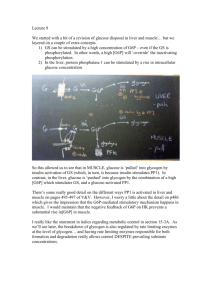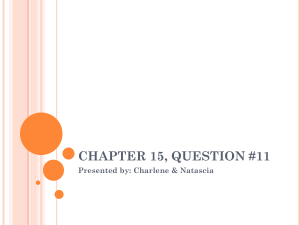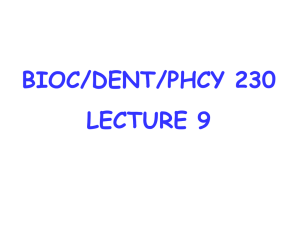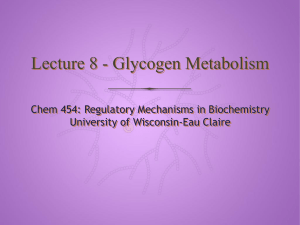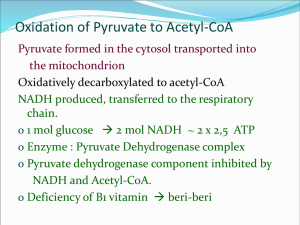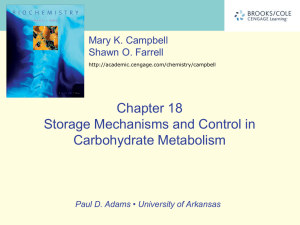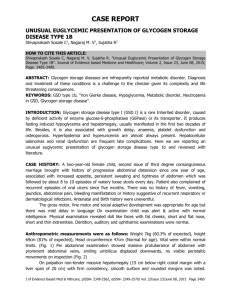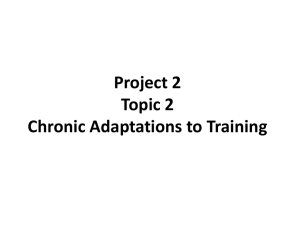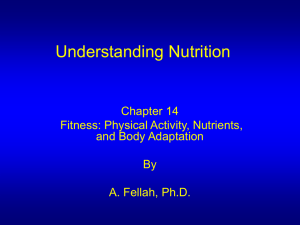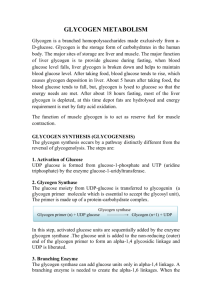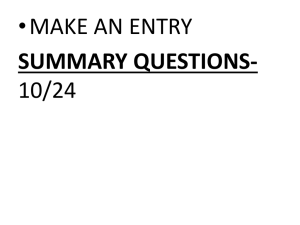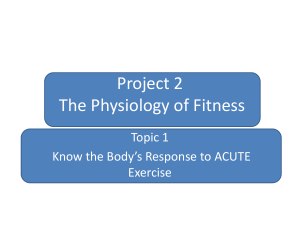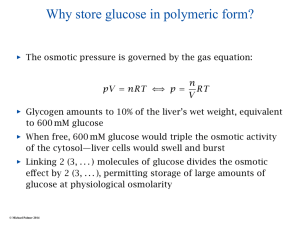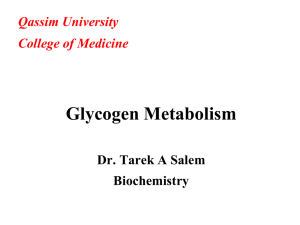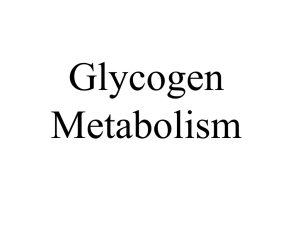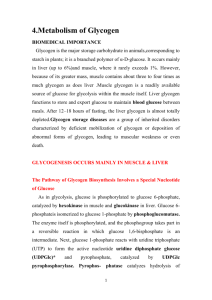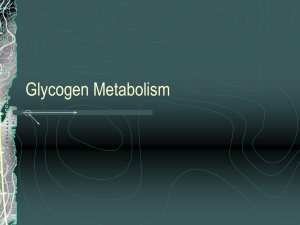GIZI OLAHRAGA - dr. Apoina Kartini, M.Kes.
advertisement
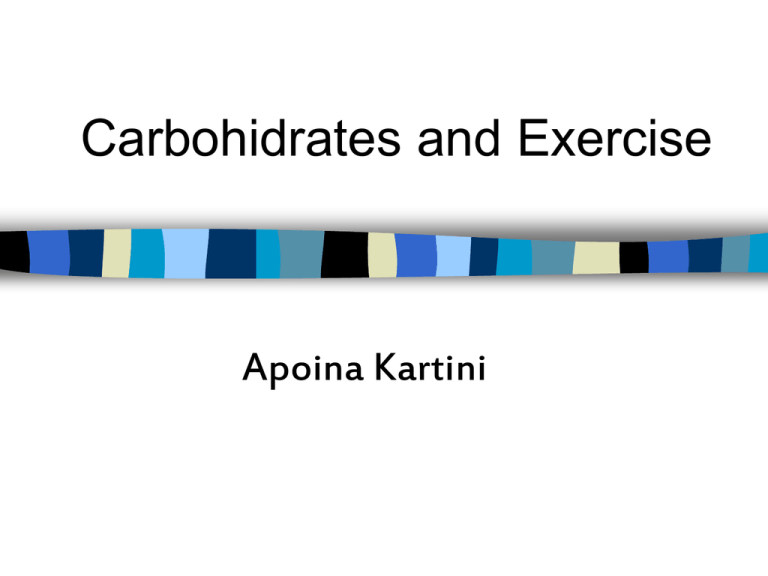
Carbohidrates and Exercise Apoina Kartini Carbohydrate : 1. Polysaccharides (starches), 2. Disaccharides (sucrose and lactose), 3. Monosaccharides (glucose and fructose). These carbohydrates (CH) must be: 1. Digested, 2. Absorbed, 3. Transported to appropriate cells for metabolism. What the happens to the carbohydrate after it is absorbed into the body? Digested to glucose for absorption into the blood Fructose and galactose are converted to glucose by the liver. Glucose is the blood sugar. A high-CH meal will lead to a rather rapid increase in the blood sugar level, usually within an hour. The glycemic index represents the effect a particular food has upon the rate and amount of increase in the blood glucose level. Foods containing high amount of refined sugars have a high glycemic index because they lead to a rapid rise in the blood sugar, But, some starchy foods also have a high glycemic index Foods high in fiber, such as beans, generally have a low glycemic index, Fructose has a low glycemic index, which is one of the reasons its use had been advocated for endurance athletes. Normoglycemia: 60-100 mg/dl, or mg/100 ml, or mg%). The rise in blood stimulates the pancreas to secrete insulin into the blood. Insulin is a hormone that facilitates the uptake and utilization of glucose by various tissue in the body, most notably the muscle and adipose tissue. Foods with a high glycemic index may lead rapidly to high blood glucose levels, possibly hyperglycemia (>140 mg%), which will cause an enhanced secretion of insulin from the pancreas. High serum levels of insulin will then lead to a rapid, and possibly excessive, transport of the blood glucose into the tissues This may lead in turn to a reactive hypoglycemia (<40-50 mg%) The fate of blood glucose : (Figure 4.6) 1. May be used for energy, particularly by the brain and other parts of the nervous system that rely primarily on glucose for their metabolism. 2. May be converted to either liver or muscle glycogen. Liver glycogen may later be reconverted to blood glucose. 3. May be converted to and stored as fat in the adipose tissue. When the dietary CH exceeds the energy demands of the body and the storage capacity of the liver and muscles for glycogen. 4. May be excreted in the urine if an excessive amount occurs in the blood because of rapid ingestion of simple sugars. The fate of blood glucose The body has three energy sources of CH : 1. Blood glucose, 2. Liver glycogen, 3. Muscle glycogen. One hour of aerobic exercise uses over half of the liver glycogen supply Fifteen hours or more of starvation will deplete the liver glycogen. The greatest amount of CH stored in the body is in the form of muscle glycogen. Because the muscle compose such a large proportion of the body mass as contrasted to the liver. Muscle glycogen is about 12 grams/kg of muscle tissue. As liver glycogen, the muscle glycogen stores also may be decreased or increased, with considerable effect on physical performance. A trained endurance athlete may have twice the amount of stored muscle glycogen than an untrained sedentary individual has. Approximate CH stores in the body of a normal, sedentary adult: Source Blood glucose Liver glycogen Muscle glycogen Amount in grams Calories 5 75-100 300-400 20 300-400 1.200-1.600 Gluconeogenesis = the new formation of glucose Some body cell (nerve cells in the brain and retina and red blood cells) are normally totally dependent upon glucose for energy and require a constant source. CH can be used to produce energy either aerobically or anaerobically. In the lactic acid system, ATP is produced rapidly via anaerobic glycolysis (the end product: lactic acid) In the oxygen system (aerobic glycolysis), the production of relatively large amount of ATP. For the same amount of CH, anaerobic metabolism yields only two ATP, whereas aerobic metabolism yields thirty-six to thirty-eight ATP. Some body cell (nerve cells in the brain and retina and red blood cells) are normally totally dependent upon glucose for energy and require a constant source. CH can be used to produce energy either aerobically or anaerobically. In the lactic acid system, ATP is produced rapidly via anaerobic glycolysis (the end product: lactic acid) In the oxygen system (aerobic glycolysis), the production of relatively large amount of ATP. For the same amount of CH, anaerobic metabolism yields only two ATP, whereas aerobic metabolism yields thirty-six to thirtyeight ATP. Hypoglycemia and depleted muscle glycogen may precipitate fatigue. CH supplies approximately 40% of the body’s energy needs during rest. In mild to moderate exercise 50% or more When exercise becomes more intense, such as at 70-80% of capacity CH is the preferred fuel At maximal or supramaximal exercise efforts, it is used almost exclusively. A well-conditioned person may be able to exercise: – for many hours at 40-50% of VO2 max, – for 1-2 hours at 70-80% of VO2 max, – but only for minutes at maximal or supramax level of VO2 max. CH more efficient fuel than fat, by about 7 % More oxygen is needed to metabolize the fat From one liter of oxygen, we will find that CH yields about 5,05 and fat gives only 4,69 Calories CH is able to produce ATP for muscle contraction up to three times as rapidly as fat. The primary CH source of energy for physical performance is muscle glycogen, specifically the glycogen in the muscle that are active. As the muscle glycogen is being used during exercise, blood glucose may enter the muscle and also enter the energy pathways, The liver will release some of its glucose to help maintain blood glucose levels, and prevent hypoglycemia Exercise facilitates the transport of blood glucose into the muscle.
